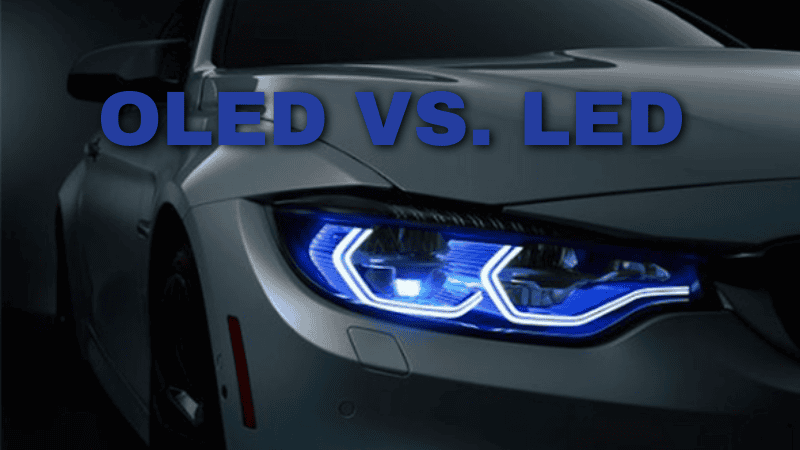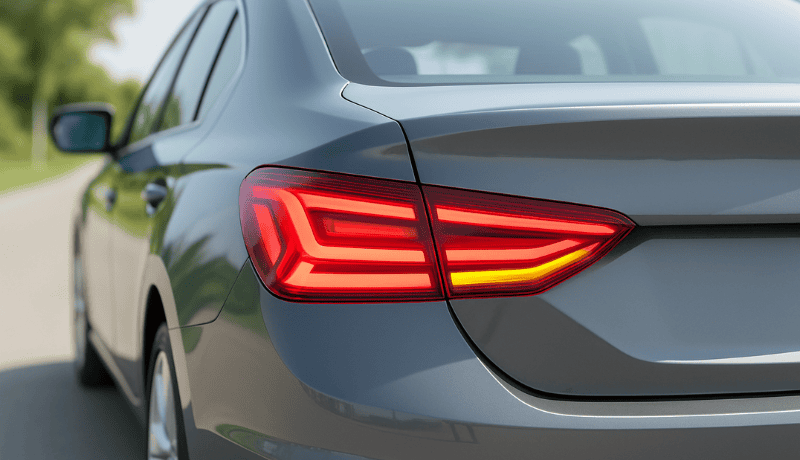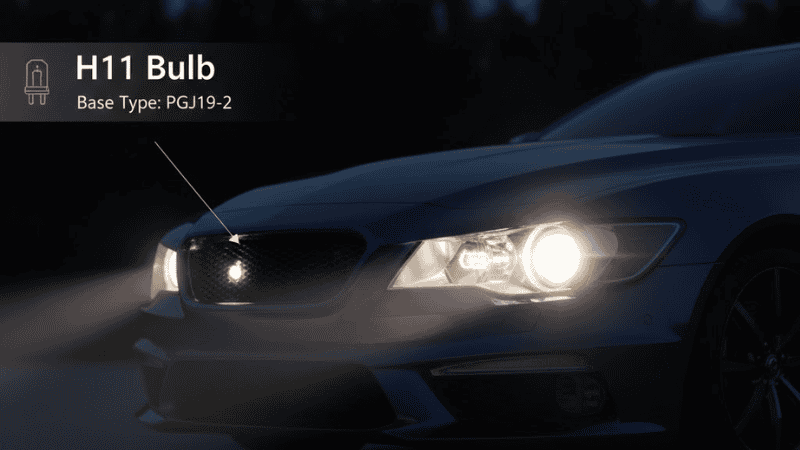The automotive industry evolves with time, and the latest technologies replace the old ones. Automotive lighting is no exception.
Light-emitting diode (LED) technology is famous for the lighting system in most vehicles, while organic light-emitting diode (OLED) technology is a relatively new concept in recent years.
These lighting systems illuminate the roads, enhance vehicle aesthetics, and ensure road safety. From their unique designs to illumination, both bring innovation to the automotive lighting industry.
So, in an LED vs. OLED technology, which is better for automotive? Let’s explore this blog to learn about OLED and LED technology and make informed decisions.
What is OLED Technology?
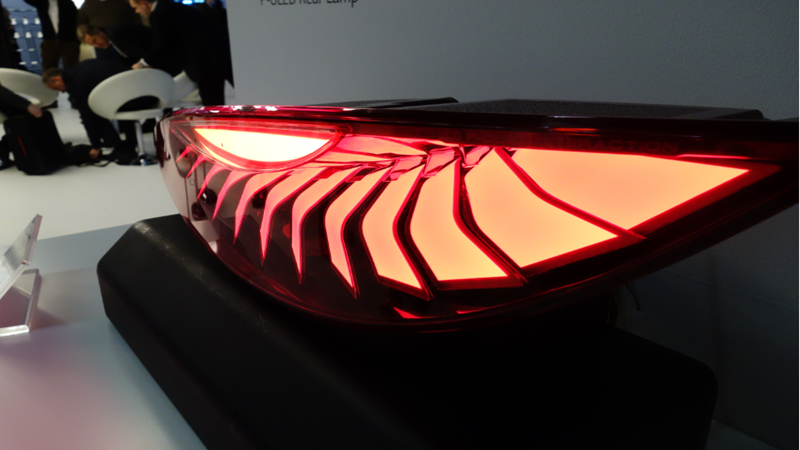
OLED technologies function by using organic light-emitting diodes (OLEDs). These OLEDs emit light when energy makes its way through the organic material in the system.
The best thing about OLED lighting is that it may not require any filter or backlight. Compared to LED, an OLED lighting source is more efficient, easier to manufacture, and very thin.
Moreover, the thin electroluminescent layer in the OLED lighting distinguishes them from other light-emitting diodes and liquid crystals.
These organic semiconductors are laid between the anode and cathode and are responsible for generating energy and lighting up the OLED lighting.
When you connect an energy source to the OLED lighting, the cathode provides electrons to the organic molecules. At the same time, the anode removes these electrons from the organic material from place to generate holes.
This movement of electrons to fill these empty holes includes energy in the form of light. An OLED automotive lighting system works on basic electricity principles but with organic semiconductors.
What is LED Technology?
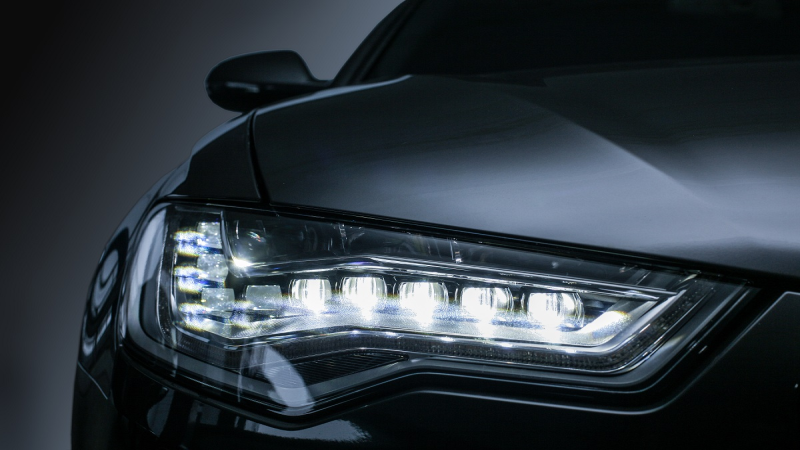
A light-emitting diode (LED) emits light upon the passage of electricity through its semiconductor. When you connect the mini LED lighting to an electrical source, the electrons recombine with the holes, and this mechanism emits light during the process.
Primarily, an LED automotive lighting system lets the current flow forward and blocks the way for it to move backward (in some situations, reverse bias happens).
It consists of a heavily doped Pn junction. The best thing about high-quality LED lighting is that it can emit colored light depending on the spectral wavelength.
Light-emitting diodes are more efficient than other incandescent bulbs when it comes to lighting up the surroundings.
These mini LED panels come with various pins and have simple connections. One wire in a mini LED lighting is positive, and the other is negative. It only works in one direction.
Benefits and Limitations of OLED for Automotive Use

OLED lighting, with its advanced features, plays an integral part in the automotive industry. The OLED benefits the automotive lighting sector in different ways, but it also has some limitations.
The advantages of OLED lighting and its limitations for automotive lighting are below:
Benefits
- High Contrast Ratio: The OLED automotive lighting system generates infinite contrast ratios of vivid colors for excellent visibility. This fantastic function leads to infinite contrast ratios and better visibility at night.
- Thin and Flexible: OLED daytime running lights are thin and more flexible than LEDs. Assembling these lights increases designers’ flexibility. With more design flexibility, integrating OLED lighting in different parts of vehicles becomes more manageable, especially for curved surfaces.
- Response Time: The OLED automotive lighting system produces high-quality lighting because each pixel emits light independently compared to liquid crystal displays. That’s why they have faster response times and better visibility than LED and LCD panels.
- Energy-Efficient: An OLED lighting source is more energy-efficient than an LED because it emits light directly from organic materials when current passes. This less energy and power consumption increases fuel efficiency and battery life in vehicles.
Limitations

Although OLED lighting has some limitations for automotive lighting applications, superior visibility and design flexibility make it an attractive option for the automotive industry. As technology evolves, it might mitigate limitations like burn-in and brightness.
- Limited Lifespan: The organic material in the OLEDs may degrade with time, reducing brightness, colors, and image quality.
- Prone to Damages: Compared to other LCDs, OLEDs are more prone to damage from moisture and water. This may make implementing them in automotive lighting applications where exposed to environmental elements.
- Brightness Degradability: The brightness of OLEDs can affect the overall visibility. This may lead to non-uniform brightness and dim lighting with time.
- Burn-in Risk: OLEDs are more susceptible to burn-in upon long exposure. They do not have excellent static user interfaces. Burn-in may leave a permanent imprint on the car headlights, which may be very concerning when using OLEDs for automotive lighting applications.
- Cost: Price is the factor for these lights. Organic light-emitting diode is still an advanced technology that is more expensive than other vehicle lighting options. This may limit its adaptation to automotive lighting applications, but it is available in high-end vehicles.
Benefits and Limitations of LED for Automotive Use
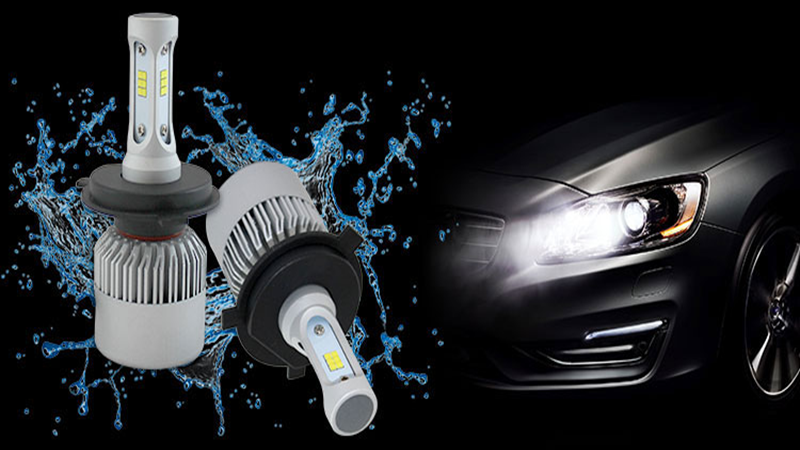
LED lighting is the most popular choice for vehicles due to its reliability and cost-effectiveness. However, these mini LED lights have limitations and benefits that are below:
Benefits
- Long-Lasting: These LEDs offer a longer lifespan than other light bulbs. They are also easy to replace and require less maintenance.
- Highly Efficient: LED lighting is more efficient than OLED, despite producing heat. The heatsink in mini LEDs regulates the heat produced during use, giving you an excellent driving experience and enhancing the overall battery health.
- Compact Size: LEDs’ compact size and design make them suitable for various arrangements, not only vehicles. That’s the reason they have become a go-to option for every automotive lighting system.
- Brightness: Micro LEDs’ instantaneous illumination makes the way brighter with white light. With no burn-in suspicion and quick response time, mini LED car lights offer enhanced safety in dark scenes and night-time, specifically when it comes to brake lights and turn signals with their high dynamic range.
- Durability: The mini LED lighting is more durable than other lights due to its shock- and vibration-resistant features. This makes mini LED headlights suitable for automotive lighting systems.
- Color Variations: The best thing about mini LED car lights is that they come in different vivid colors, from white light to blue light, which enhances the car’s aesthetics. You can customize vivid colors like blue light for your settings.
Limitations
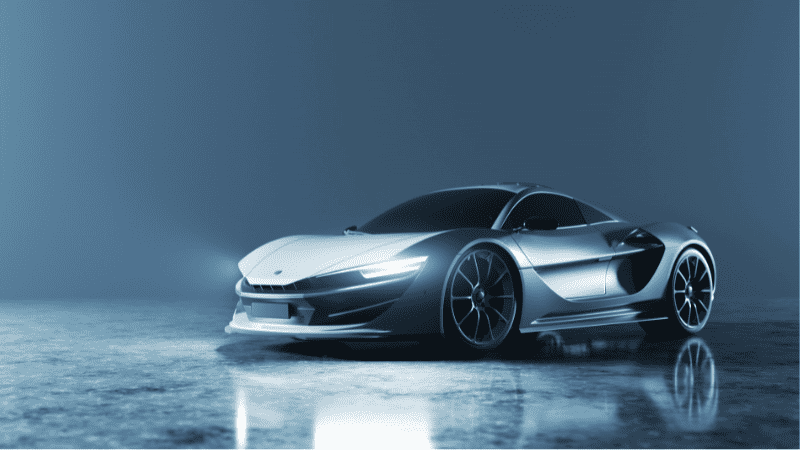
- Compatibility Issues: One of the main examples of mini LED lighting technology limitations is compatibility. These mini LEDs are not compatible with all vehicle designs, and you may need to make changes to their installation.
- Initial Cost: The initial cost of mini LED lights is high enough that they are primarily available for high-end vehicles for automotive lighting. But this one-time investment is worth it as the lights are durable and long-lasting.
- Heat Sensitivity: LEDs and Mini LED car headlights are heat-sensitive. Although LEDs may not get hot by themselves, other sources can lead to damage due to excessive heat. However, they have a heatsink and thermal management to cool down the entire light.
Comparison in Specific Automotive Applications
Here is a comparison of LED vs. OLED, which will help you determine which one is better.
Headlights
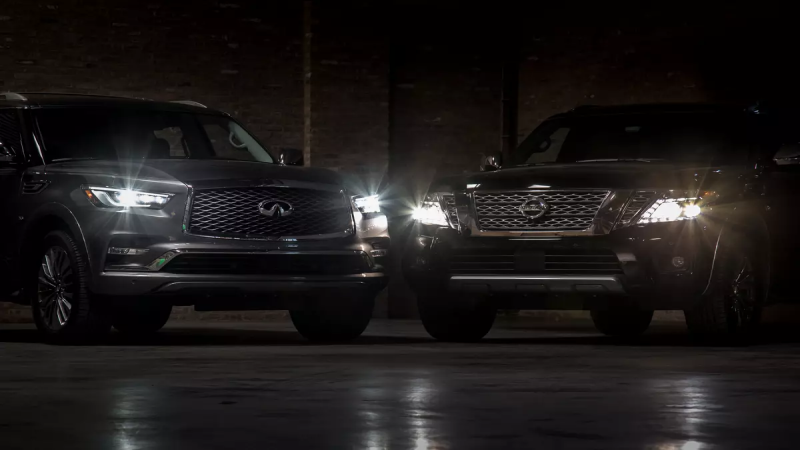
OLED light technology allows for flexible OLED panels, and each pixel emits light independently. It enables designers to create innovative designs for car headlights to complement the shape of the vehicle.
OLED light also achieves a nearly infinite contrast ratio with pixel lights, which enhances visibility and road safety.
You can adjust the brightness of OLED lights, which improves their efficiency. The OLED car headlights offer excellent contrast but may not provide brightness like LED headlights and poorly light the roads in various weather conditions.
On the other hand, LED headlight bulbs offer high brightness and enhanced illumination. They are long-lasting and require less maintenance and replacement.
LED car headlights consume less power and contribute to improved fuel efficiency. However, due to their intense brightness, LED headlights sometimes generate glare from approaching drivers, which leads to accidents.
Interior Lighting
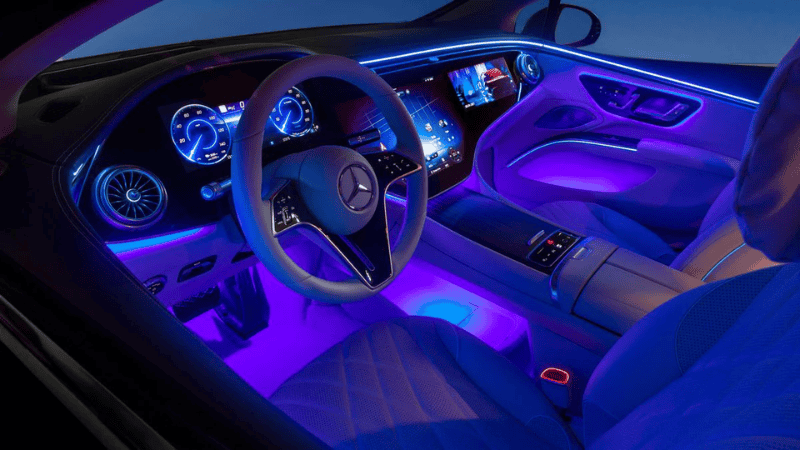
OLED lights have thin panels, making them perfect for various customized interior lighting settings. You can install them on curved surfaces to improve the aesthetics of your vehicle interior. They offer more freedom of expression and customization.
OLED light technology illuminates the surface evenly with soft lighting and reduces glare in the dark room. You can adjust their brightness to save battery life and create engaging environments.
However, OLED lights may be expensive and offer a reduced lifespan. Because LED headlight offers high brightness, you can get a tailored lighting solution with them.
You can install LED headlights in different interior spaces in your vehicles. They offer a longer lifespan and are also energy efficient. The LED headlight may cause glare due to its bright light and is also more complex to install than an OLED light.
Tail Lights and Signal Lights
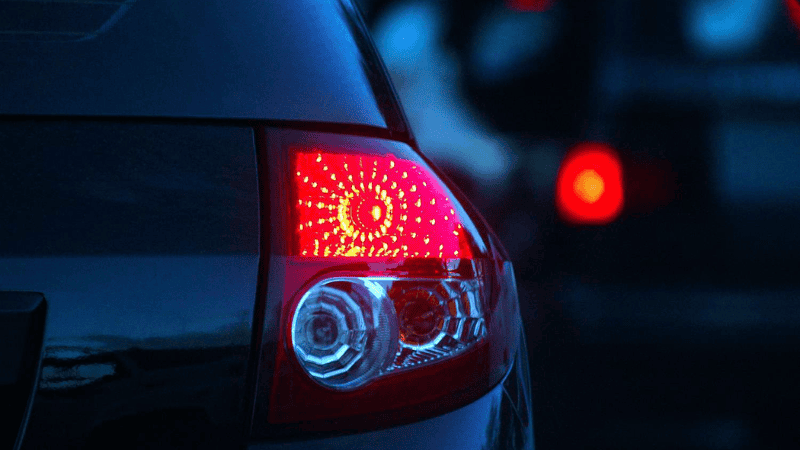
The uniform illumination of OLED lights provides better results when used as signal lights and tail lights in vehicles. They enhance visibility in upcoming traffic and increase road safety. These lights provide a clear indication to others on the road and improve overall safety.
On the other hand, LEDs are brighter than OLEDs as they emit light and provide increased visibility if used in backlight and signal lights. LEDs are more visible even in direct sunlight, which makes them best for these lights.
OLED VS. LED: Which One to Choose?
| Feature | OLED Lighting | LED Lighting |
|---|
Choosing LED vs. OLED lights depends on your preference and the specific requirements of automotive applications.
OLEDs are emerging technologies that offer flexibility for design and uniform illumination, making them perfect for various automotive applications, from interior to exterior lighting. Although they are less common, they will become trendy in the future.
LED lights are more popular due to their high brightness, durability, less maintenance, and cost-effectiveness.
However, if you are looking for controlled features and innovative designs, choose OLED lights. If you are looking for premium brightness and durability, LED lights are best.
Conclusion
The choice between OLED and LED light technology depends only on the specific application and your needs. Both automotive lights offer unique features, from aesthetics to cost-effectiveness.
OLED lights offer innovation and flexibility, while LED lights offer a longer life span and price affordability. Whatever you choose, OLED or mini LED technology, make your decision based on careful analysis after determining your needs.
Before making any decision, evaluate your requirements. We hope this comparison of LED vs OLED provides you with comprehensive information.
Find the Best Automotive Lighting – Order Now
Carlightvision is among the top automotive headlight manufacturers with a thorough insight into the latest trends in automotive lighting parts. You can consult us for expert advice and laminate your on-road journey with a new vision.
Explore our website for unique OLED and LED automotive lighting styles. Our advanced LED headlight technology will enhance your driving experience and also increase your road safety. Contact us and get reliable and innovative solutions for your vehicles.
